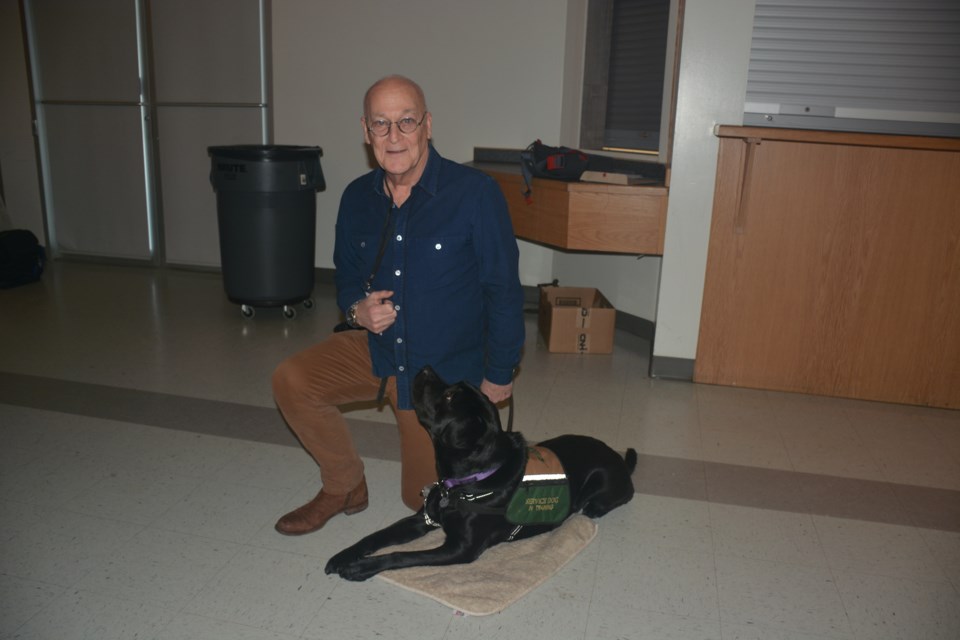GRASSLAND – We see them everywhere, perhaps not so much in rural areas, but there are approximately 390 qualified guide and service dogs supporting Albertans with disabilities, said John Wheelwright, LLB, Guide & Service Dogs Specialist with the Civil Society & Community Initiatives Branch, Seniors Community & Social Services for the Province of Alberta.
“And we add approximately 80 new dogs every year,” he noted, adding in his 16 years in the industry he has worked with “probably around 40 or so” dog.
Wheelwright was featured at the 39th-annual Farm Women’s Conference and Awards held in the Grassland Community Hall Feb. 9 and brought along Cooper, a two-year-old purebred Labrador retriever, a service dog in training (SDiT) that he is currently working with.
During his presentation, Wheelwright explained his role with in training and providing guide and service dogs for people with various needs. He stressed that not just any dog is cut out for this very specialized work and it seems that black and golden Labrador retrievers are some of the best.
Wheelwright said his group works with breeders who have dogs with very specific behaviours. And even in a litter of pups, not every one will make the grade to be a guide or service dog. He said they will begin working with the puppies often even before their eyes are open, and it takes many hours and a lot of time in training, up to two years before they are ready to “go to work.” After training, and placed with an owner, there is still further training with both dog and owner to ensure they are a good “fit.” There is also follow up on a regular basis to make sure that all is working well. And he said, just like people, these dogs need a “holiday” every now and then, as it is indeed work.
Answering questions from the women in attendance at the conference, he said some individuals want to train their own dog, and that is allowed, but cautioned it doesn’t work with every dog and certainly not every breed.
Service dogs perform specific tasks or behaviours to help people with visible and non-visible disabilities such as epilepsy, PTSD, diabetes or mobility limitations. Guide dogs support people with low or no vision by navigating around obstacles, finding bus stops and elevators, and similar tasks. Both guide dogs and service dogs are trained and tested to ensure safety in public. By law, qualified guide and service dog teams have the right to access any location where the public is allowed.
Some business establishments also allow any dog on their premises, as long as it is on a leash. We asked Wheelwright if that perhaps interfered with the work of guide and service dogs.
“We understand that people want to have their pets with them,” he replied. “We’ve all been through a pretty rough couple of years and it’s nice having their company. However, out of respect for Albertans with disabilities, it is important to keep public areas free of dogs so that they can work effectively and without interference from other dogs. If a pet animal encounters a working dog, it would be appropriate to move away until the working dog clears the area.”



